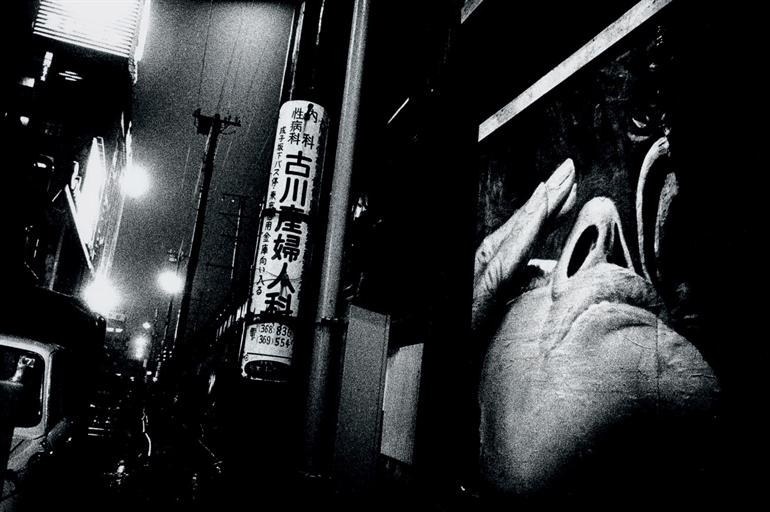Daido Moriyama: Pioneering Urban Grit and Street Photography
@jorgebscomm for @empowervmedia*
Daido Moriyama, a luminary in contemporary photography, has left an indelible mark on the subgenres of Urban Grit and Street Photography. Born in 1938 in Osaka, Japan, Moriyama's work is a visceral exploration of urban life, capturing its essence in a raw and unfiltered manner. This article delves into Moriyama's creative process, influences, and insights, drawing upon specific examples, scholarly research, and critical perspectives to provide a comprehensive analysis.
 |
| Daido Moriyama, "Lips" (2000) |
Creative Process
Moriyama's creative process is a spontaneous dance with the streets, reminiscent of a "stray dog" capturing the pulse of urban chaos. His iconic photograph, "Stray Dog" (1971), epitomizes this approach (Baker 2012). Shot in high contrast, the image portrays a stray dog's silhouette against a desolate background. The blurred lines and dynamic composition enhance the sense of transience, echoing the impermanence of life on the streets.
 |
| Daido Moriyama - Stray Dog (1971) |
Influences
Rooted in the Provoke movement, Moriyama's work challenges established norms. The influence of William Klein is evident in "Shinjuku" (1969), where Moriyama mirrors Klein's chaotic portrayal of New York (Sas 2020). The high-grain aesthetic, tilted angles, and fragmented composition intensify the disorienting urban experience, showcasing Moriyama's fusion of global influences with a distinctly Japanese perspective.
 |
| Daido Moriyama, "Shinjuku" (1969) |
Research Context
To contextualize Moriyama's work, it is crucial to consider the broader landscape of urban photography, Japanese art history, and social theory. Scholarly works such as Sontag's "On Photography" and Benjamin's "The Work of Art in the Age of Mechanical Reproduction" offer theoretical frameworks to understand Moriyama's engagement with the urban environment. Additionally, the historical context of post-war Japan and its rapid urbanization provides insights into the socio-cultural backdrop that shapes Moriyama's narrative (Johnston 2005).
Visual Elements and Composition
Moriyama's "Farewell Photography" (1972) exemplifies his distinctive visual language. The photograph captures a fragmented view of a woman's face, obscured by a film of grain and shadows. The deliberate blurring disrupts traditional portraiture, symbolizing the elusiveness of identity in the urban milieu. This intentional obscurity invites viewers to grapple with the transient nature of human connections in an urban setting.
| Daido Moriyama, "Farewell Photography" (1972) |
Critical Perspectives
While Moriyama's work is celebrated for its authenticity, some critics argue that the gritty aesthetic may romanticize or sensationalize urban hardship. His relentless pursuit of the "are, bure, boke" (rough, blurred, and out-of-focus) aesthetic has faced scrutiny for potentially reducing the socio-political dimensions of his subjects (Greenberg 1939). However, defenders argue that Moriyama's approach invites viewers to confront uncomfortable realities rather than glorifying them, fostering a deeper connection to the urban experience.
 |
| Daido Moriyama, "Shinjuku" (2000-2004) |
Daido Moriyama's contribution to Urban Grit and Street Photography transcends the visual realm. By blending global influences with a distinctly Japanese perspective, Moriyama creates a visual dialogue that speaks to the complexities of modern urban existence. Engaging with his work through a multidisciplinary lens enriches our understanding, highlighting the intersection of visual art, social theory, and historical context. As debates persist around the ethics of aestheticizing urban hardship, Moriyama's legacy endures as a testament to the power of photography to evoke visceral responses and provoke critical conversations.
*AI assisted



Comments
Post a Comment